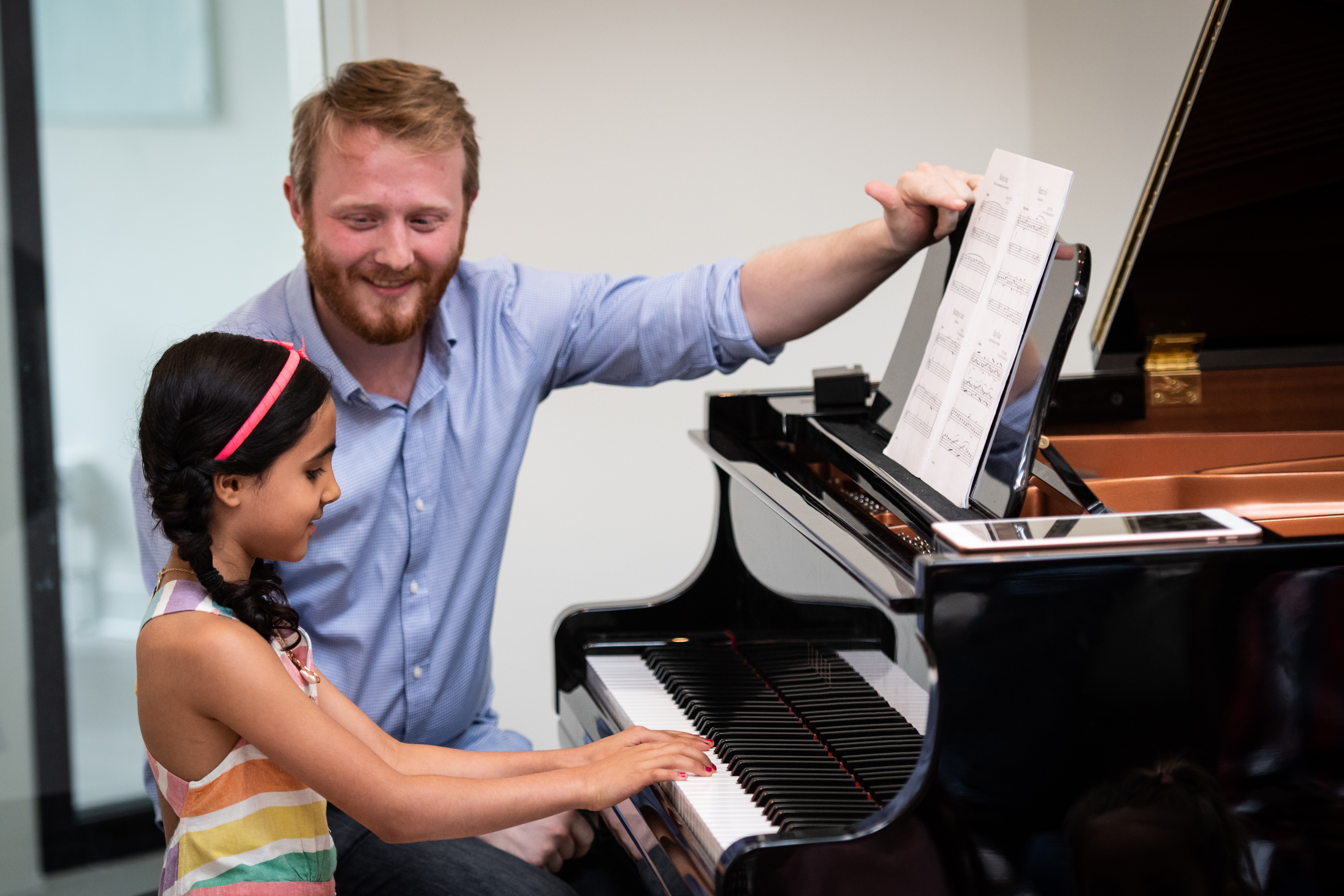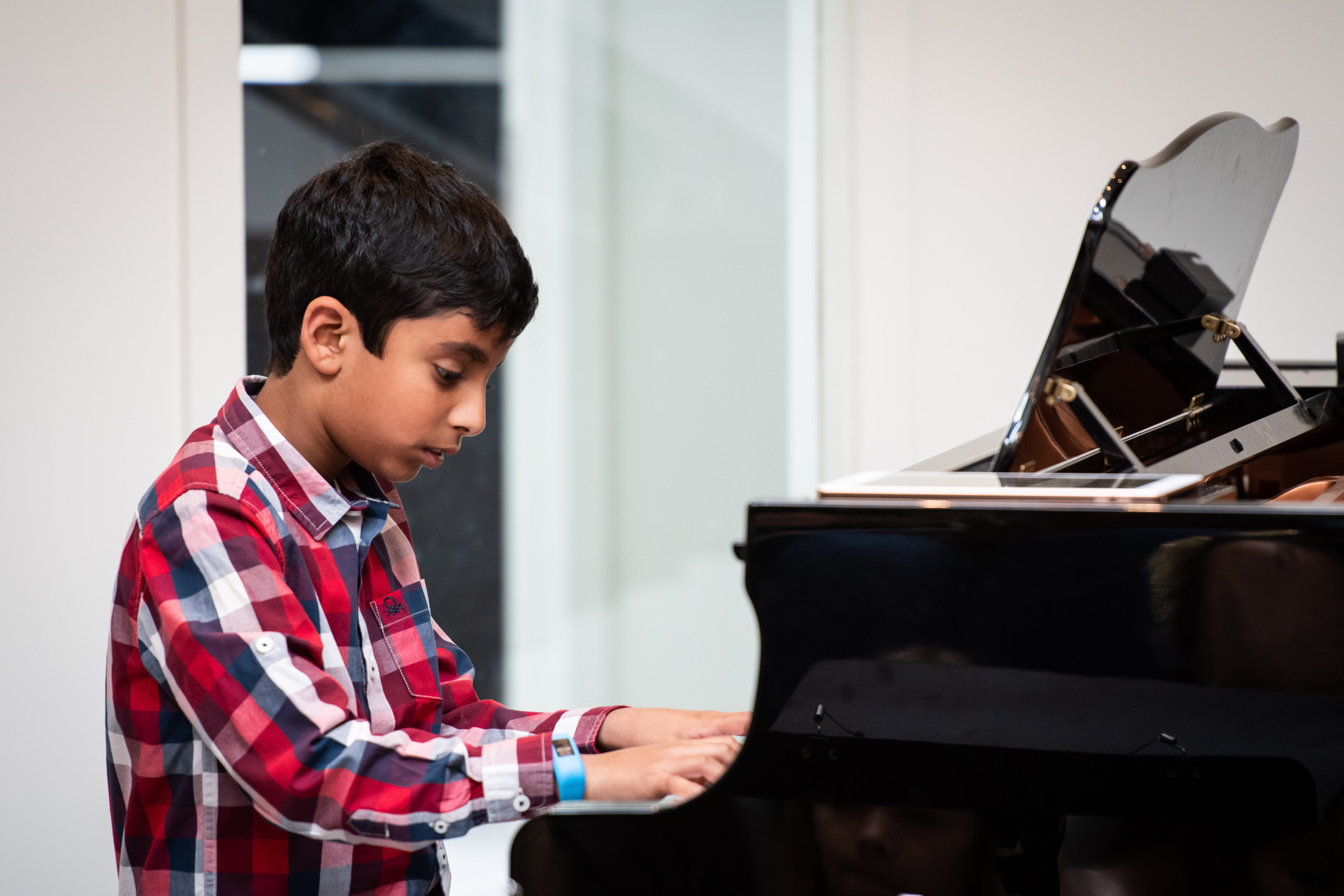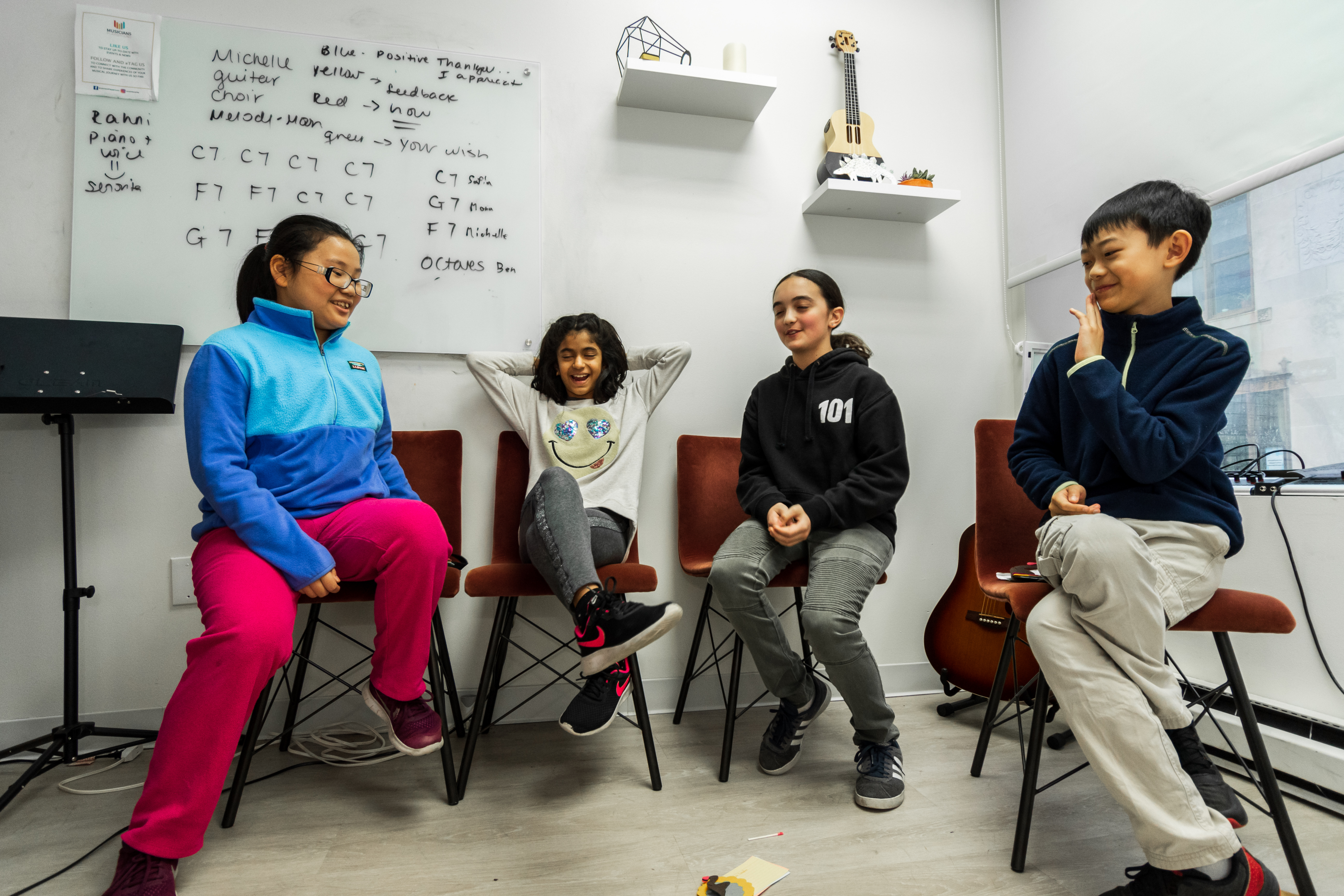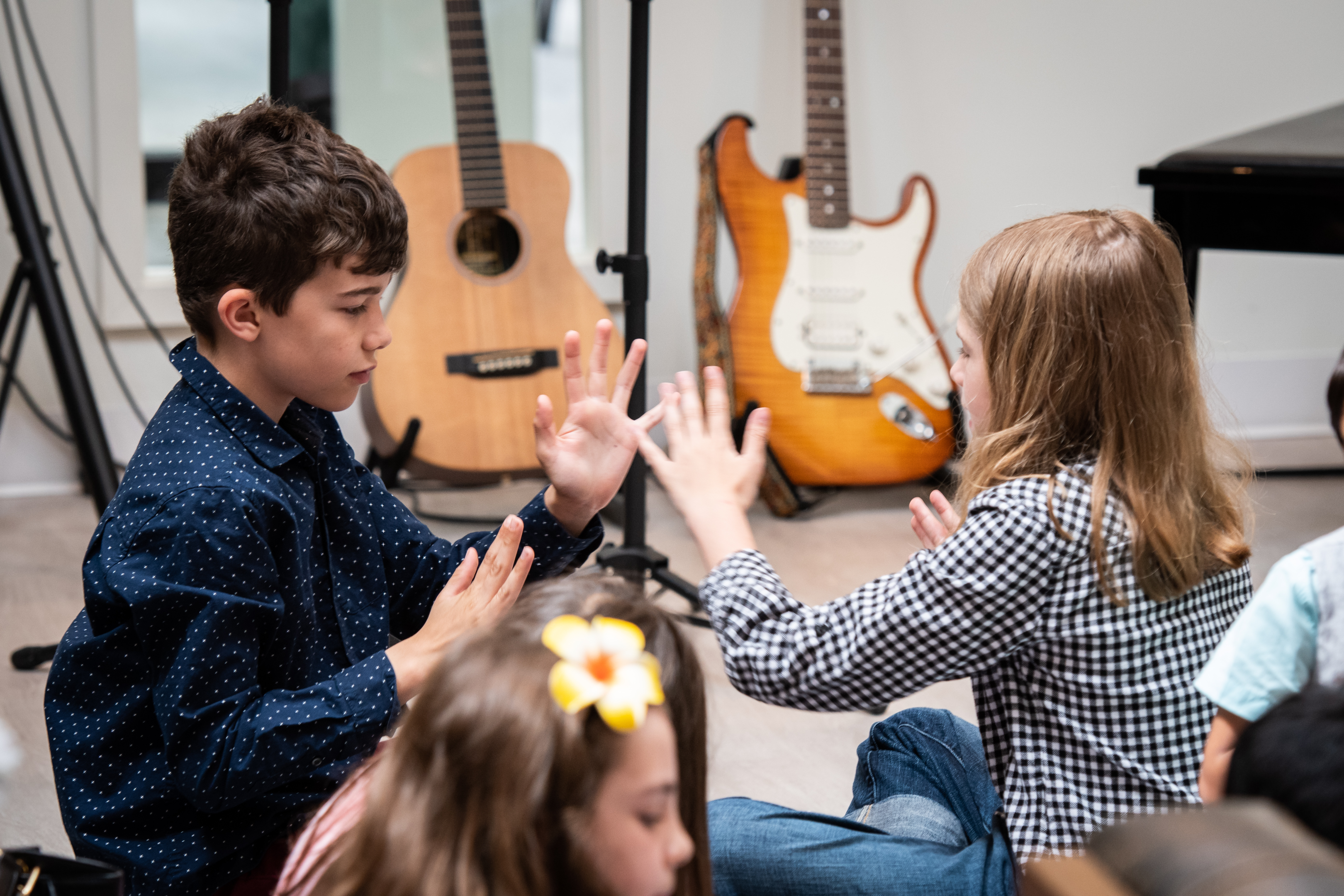Blog
Winning the Practice Battle: Getting Kids to Practice Music

Is getting your child to play their instrument a battle a home? We hear you!
Learning to play a musical instrument is a rewarding but challenging journey that requires practice and dedication. Our kids, however, have different plans, and as parents, we know the struggle of getting our kids to practice outside of their music lessons all too well.
This article will explore various strategies to motivate kids to practice their instrument without having to nag them all the time – how should practice sessions look as our kids go through different developmental stages, adjusting our disciplinary methods, empowering our kids with autonomy and different reinforcement techniques, and how best to collaborate with your child’s music teacher in order to motivate your child, nurture their talent, and help them get the most out of their music education.
Developmental Considerations in Music Practice
Music practice needs to adapt to the developmental stages of children, as they will have different thresholds of responsibility as they grow. Thresholds of responsibility are the amount of responsibility placed on the child for their practice. For example, young kids (preschoolers, for instance) need more guidance and structure, while older kids can be given more autonomy.
In her book, The Development of Musical Skills in Children, Susan Hallam provides an overview of the developmental stages that children go through as they learn music and offers practical advice on how you can support your kids at each stage.
The Preparatory Stage (birth to 5 years old): During this stage, children develop basic musical abilities such as singing, moving to music, and learning to listen and respond to musical sounds. At this stage, you can support your kid’s development by singing to them, playing musical games, and exposing them to a variety of musical styles and instruments.
The Initial Instruction Stage (ages 5-7): During this stage, children begin formal instruction in music and learn to read sheet music. At this stage, you can establish a regular practice routine for your child by setting aside a specific time and place for them to practice each day. It’s important to make playing music a positive experience for them by providing verbal praise, using games and activities to make practice enjoyable, and keeping their practice sessions short and focused.
The Developing Musician Stage (ages 7-11): During this stage, the child continues to develop their technical skills and musical understanding. As your child progresses to this stage, their practice should become more focused and goal-oriented. You can help your child set goals that are specific, such as mastering a particular piece of music they’re learning in their music lessons or improving their technical skills. It’s also important to encourage your child to practice independently and to seek out new musical experiences, such as playing in ensembles or attending concerts.
- The Independent Musician Stage (ages 11 and up): During this stage, the child becomes more independent in their music-making and may start to specialize in a particular instrument or style. At this stage, try to motivate them to take ownership of their musical development and set their own practice schedule and goals. You can also support your child by finding the right teacher and getting them into private lessons, helping them plan performances (and attend them!), and helping them navigate the challenges of pursuing a career in music if that is their goal.

How Does Disciplining Work at Various Age Groups?
Discipline and motivation can be challenging issues when it comes to getting your child to practice music, and disciplining methods need to adapt to the developmental stage of the child. Preschoolers respond well to positive reinforcement, for instance, while older kids may need more structure and accountability. For example, you can use a reward system like a sticker chart to motivate preschoolers to focus in their practice session, while middle schoolers or high schoolers may benefit better from a set practice schedule or a practice log.
Here are some general guidelines on how to approach discipline and motivation for each developmental stage:
Preparatory stage (birth to age 5): At this stage, discipline and motivation should be approached in a positive and playful manner. You can use games and activities to engage your child with music, but you should avoid “formal” practice sessions or any negative consequences or punishment for lack of participation.
At the initial instruction stage (ages 5-7), you can use a combination of positive reinforcement and gentle reminders to motivate your child to practice regularly. For example, if the child has a set time after dinner to practice, listening and providing positive feedback, such as “I can hear how much you’re improving!” and “That sounded great!” can give the child a sense of responsibility. If they lose focus halfway through and run off to watch TV, a gentle reminder that would keep them on track would be “Let’s try this section just one more time.” When they follow through, more positive reinforcement is encouraged (like “I’m proud of you for sticking with it!”). It’s important to make practice a fun and engaging experience in order to spark genuine interest for the child and to avoid punishment or negative reinforcement for lack of participation.
Developing musician stage (ages 7-11): At this stage, you can start to give your child more responsibility for their practice, trusting them to play music on their own time. You can also try to stimulate goal-setting and self-monitoring. Hopefully by letting go of the reigns your child will become more intrinsically motivated – Positive reinforcement and regular feedback from the music teacher are important motivators. That being said, you should also be prepared to have honest conversations with your child about the importance of practicing consistently.
Independent musician stage (ages 11 and up): At this stage, try your best to motivate your child to take ownership of their practicing and to set their own goals. You can provide guidance and support wherever necessary, but you should avoid micromanaging or pressuring your child to practice – they might feel discouraged by their autonomy being taken away. It’s important to maintain open communication and to be supportive of the child’s aspirations and goals.
If your child lacks motivation or doesn’t feel like practicing, there are several strategies that you can try to encourage your child to practice:
Gamification: Incorporate games, activities, and rewards in order to make practice fun.
Set a consistent practice schedule and make practice time a part of the child’s routine. Involve them in the process, and prioritize their other commitments, school work, and activities together with them.
Provide positive reinforcement for effort and progress, rather than focusing solely on achievement: Most children nowadays are conditioned to be result-oriented (getting a good grade is an important goal in school, for instance, but less emphasis is put on their enjoyment of learning or development of their social skills). Make fun their number 1 priority and practicing will become less of a chore. For instance, you don’t have to only watch your child play music in performances – you can listen to them play their instrument just to for the sake of hearing their progress – and praise their efforts. This will show then that you’re invested in their journey, rather than the end result.
Explore new musical experiences and styles to keep your child engaged and motivated. For example, they may want to try out a new instrument or style of playing, this could re-engage them.
Be supportive and understanding, and avoid punishment or negative reinforcement for lack of participation. Remember that many external factors, such as outside commitments, can impact your child’s self-motivation, and that some re-prioritizing might be needed.
Research shows that environment can also play a role in child learning, so it’s encouraged to create a positive and supportive environment for music practice (a dedicated practice room, for instance) which will motivate your child to develop good practice habits.
Autonomy: Empowering with Autonomy over Time
Autonomy is the key to intrinsic motivation (more on that below). As children grow older, they should be given more autonomy over their practice, and their sense of personal responsibility should increase gradually. Work with your child’s teachers to empower them by giving them choices, like what instrument to play, what songs to learn, and when to set aside time to play music. The balance of choice versus dictation is crucial to keep your child intrinsically motivated.
Research has shown that autonomy is important for children’s overall well-being and development. When children feel in control of their own learning, they are more likely to adopt a growth mindset and take ownership and responsibility for their practice, leading to better outcomes.
Intrinsic vs Extrinsic Motivation
Intrinsic motivation is the desire to do something for its own sake. It is characterized by a sense of enjoyment, satisfaction, and personal fulfillment that arises from the activity itself, rather than external rewards or incentives. On the other hand, extrinsic motivation is the desire to do something for a reward or to avoid punishment. We want our children to be intrinsically motivated to practice, as intrinsic motivation is more sustainable over a long period of time.
However, while young children do have intrinsic motivation to a certain extent (especially when they are engaged in activities that align with their interests or natural tendencies) – it is they may need some degree of external motivation or encouragement to engage in certain activities. This is particularly true if the activity is new or challenging.
For example, when learning music your child may need a gentle push to work on a new skill that their teacher just introduced, or they may require praise and positive reinforcement to help build their confidence and self-esteem enough to try it. The positive reinforcement you could try for this could be a: point system, for instance, for hitting a certain number of practice days or per practice session, which would lead to external rewards, such as gifts or money, which the child will be excited to receive. Some families we work with have limited device time for their kids, so another possible reward for practicing could be extra screen time.
Remember To Strike A Balance
That being said, It is important to strike a good balance between intrinsic and extrinsic motivation in your child as they grow. When they’re younger they may require more external motivation, but we should see that shift over time to be more intrinsic, as the kids develop more abilities and confidence in what they do and adopt a growth mindset.
Too much external motivation can undermine a child’s sense of intrinsic motivation and diminish their enjoyment of practicing. On the other hand, providing appropriate levels of support and encouragement can help to build a child’s confidence and gradually give them more and more autonomy allowing them to develop a stronger sense of joy in playing their instrument.
A good way to see if you’re out of balance with internal and external motivation is to monitor your child’s attitude towards practice – if the child seems to be motivated solely by rewards or praise, and does not express genuine interest or enjoyment in playing their instrument, then it may be a sign that external motivation is being relied on too heavily.
Another way to gauge the balance between intrinsic and extrinsic motivation is to consider the frequency and type of rewards or incentives being offered. If the child is constantly being offered rewards or incentives for their performance, or if the rewards are overly extravagant, this may be a sign that external motivation is being overused.
Additionally, you can assess your own behavior and attitudes toward your child’s activity. Are you more concerned with how your child performs in comparison to other students, for instance, or are you more focused on whether they’re having fun?
By being mindful of these factors and taking steps to foster a sense of intrinsic motivation in your child, you can help to create a more balanced and supportive learning environment that promotes both personal fulfillment and achievement for your kids.
When kids play just because it’s fun, they are more likely to develop a love for music and continue practicing throughout their lives. so, when trying to motivate your child to play their instrument as they grow older, the goal is to move from extrinsic forms of motivation to as much intrinsic motivation as possible.
Trust their Teacher
It is important for you, as the parent, to trust your child’s music teacher as the expert when it comes to motivating them to practice. This is because the teacher is trained and experienced in the field of music education and understands how to effectively engage and motivate their students.
For example, if your child is struggling with practicing their instrument, and the parent intervenes by offering extrinsic rewards or negative reinforcement, it may actually undermine the child’s intrinsic motivation and make them less likely to practice in the long run.
But it’s not just about trust – the teacher needs to know whether or not your child is following their practice guidelines at home, and whether or not they’re having a good time. If you’re struggling to understand elements of your child’s practice or even some of the points discussed in this article – keep in contact with your child’s instructor: allow them to know what’s going on at home so that the instructor can provide ideas for revitalizing the child’s passion if necessary. When you keep an open communication channel with your child’s teacher, it also helps the child understand the parent-teacher-child dynamic better and helps to foster a positive and collaborative relationship between the three of you.
At Musicians Playground our instructors keep parents in the loop by keeping a personalized digital journal for all of their students which is updated and shared with you at the end of each lesson. In it, you can see your kid’s learnings, what they’re currently working on, and what they’re doing to stay on course. You can let the instructor know what’s going on at home by editing the journal, or even in the studio before or after the lesson.
Supplement Their Music Lessons with Technology
Our kids were born with technology in their hands – Take advantage of it! The internet is a great resource that offers lots of information, video tutorials, and more.
Using self-learning music apps, for instance, is a great way to give your kids more autonomy outside of their lesson and sneak in extra practice time in the form of a game. Apps like Simply Guitar, Simply Piano, and Simply Sing provide a fun way to practice music it can make fundamentals like music theory more engaging. If you need recommendations for good music apps – ask our MP instructors! They have lots of resources they’d be happy to share with their students.
We also put out video tutorials of our own every week on our Musicians Playground Instagram and TikTok – every Tuesday our instructors take turns giving our viewers a small fun musical tip- make sure to check those out!
Make The Practice Session a Social Activity

Everything is always more fun with a friend, and many parents sign their kids up to lessons together with their siblings or friends from school. This great way to motivate your child to practice outside of their lesson, because music becomes a part of their social network.
Research has shown music to also be a great tool for social development for kids: according to Harvard Health Publishing (2019), a supportive environment for music practice is crucial for children’s motivation and enjoyment. Parents should provide opportunities for children to showcase their talents in front of others and celebrate their progress, and giving your child the chance to play with others builds their confidence and improves their collaboration abilities.
Final Thoughts:
Encouraging children to practice music requires an understanding of their developmental stage, thresholds of responsibility, autonomy, reinforcement systems, and their fluctuating motivation. The journey also isn’t linear: they might go through a phase where they’re overwhelmed by school or other activities, and sitting down to play their instrument might not always top their list of priorities.
However, by providing appropriate guidance, structure, and motivation, you as the parents and can help your kids develop a lifelong love of music, and keep them on course without feeling like you’re pushing too hard.

If you found this article helpful, consider subscribing to our monthly newsletter, where we feature articles just like this one. And if you’re ready to jump in and play, give us a call and we’ll help you get started!
Happy music-making!

